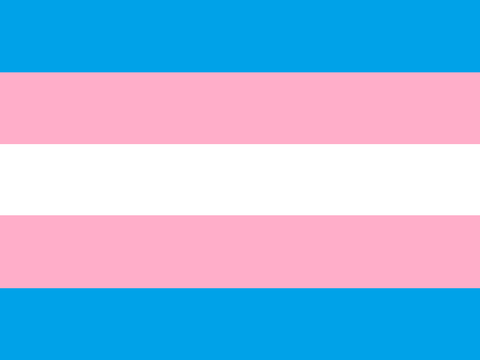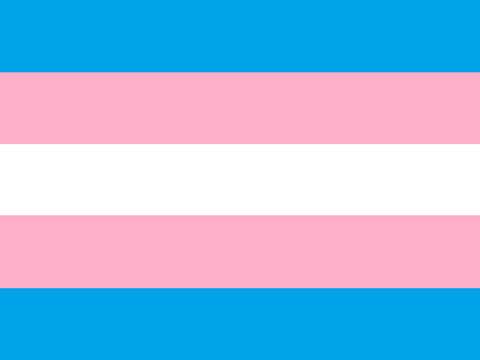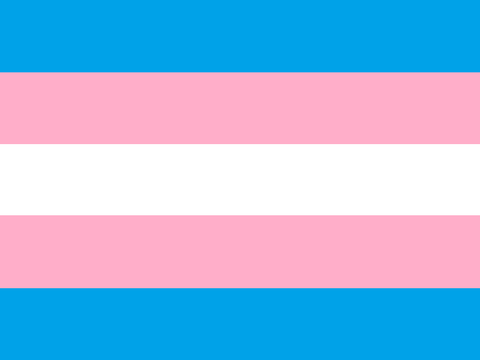Queer representation in media: the good, the bad, and the ugly
| Updated on
It’s no secret that mainstream media struggles with queer representation. It’s part of the reason why fanfiction has been thriving since the 2000s — audiences craved queer characters so strongly that they began to create their own alternative universes and headcanons (ideas held by fans that are not explicitly supported by the content itself).
While representation in entertainment media is slowly improving, progress is sluggish — and sometimes misguided.
Queer representation now comes in many forms, and it isn’t always positive. On top of that, even accurate and compelling forms of queer representation can sometimes be very upsetting to queer folks. Representation is a nuanced topic, not just because diversity is difficult to depict, but also because different forms of representation can achieve very different outcomes.
Let’s explore the complex path of queer representation together.

Why representation is important
Proper representation helps combat stereotypes and ignorance. And this isn’t just a theory. A 2015 study found that, when straight people are more exposed to gay characters on TV, they become more accepting of gay equality. On top of that, a 2020 survey by GLAAD and P&G found that queer representation increased queer acceptance by up to 45%.
The reason this works is simple: seeing queer characters on screen normalises the existence of queerness. And when these characters have compelling inner lives and relatable struggles, queer existence is destigmatised. While this certainly isn’t a cure-all for all sexuality and gender-based intolerance, it’s a great start — especially for the older generation.
It’s also important for queer people to see themselves represented. Seeing proper representation validates their experiences and affirms their existence, because it lets them know that they are not alone in their struggles. On the flip side, the lack of representation often encourages hostile environments that are very distressing for queer folks.
Let’s also not forget that queer identities have always existed — including them in works of fiction arguably makes for more realistic and compelling stories too.
Even when there’s representation, we still have to take into account diversity and intersectionality. For instance, does it only highlight well-built, cisgender gay white men, or does it include people of different races, sexualities, gender identities, and sizes? As we devour our favourite shows and books, we should always ask ourselves what experiences are being normalised — and what are being ignored.
Different types of queer representation in media

Negative representation
Negative representation happens when queer characters are based on negative stereotypes, or consistently portrayed as bad or evil people.
Consider Singapore’s local Chinese drama, My Guardian Angels (单翼天使). Creators of the primetime TV show decided to write a gay character as a paedophile who spreads STDs to teenage boys. This archaic and untrue stereotype (that gay men are paedophiles with STDs) caused a massive uproar among Singaporeans, and ultimately led the studio to issue an apology for their discriminatory (mis)representation.

Other bizarre stereotypes exist too, such as the “murderous bisexual”, the “who's the man in the relationship”, and countless dangerous and untrue ones about trans people.
While stereotypes can sometimes be hilarious in-jokes to people within the community, they cease to be funny and veer into the territory of being severely damaging when it reinforces negative biases. This is especially true if the wider society is already hostile towards queer people — these prejudices create unsafe environments and impact queer folks’ mental and physical well-being.

No representation
Okay, this isn’t technically a kind of representation, but instead a lack of it. In shows without representation, none of the characters are LGBTQ+ and none of the subplots involve LGBTQ+ characters.
Countless shows portray only straight people, or worse, a complete wash of ethnically and sexually homogenous people. For example, big franchises such as Jurassic Park, Transformers, or Fast and Furious are completely devoid of LGBTQ+ characters. One reason for that could be the homogeneity of writer’s rooms and showrunners, with the majority of them being cisgender, heterosexual (cishet) white men (although that is sloooowwly changing).

In countries such as Singapore, state-sanctioned censorship also plays a part in the lack of queer representation. For instance, free-to-air TV channels and radio stations here don’t feature any queer content because broadcasting guidelines explicitly prohibit them. Heck, a TV channel even censored Barack Obama’s pro-LGBTQ+ message in 2016 to comply with the censorship rules.
As we’ve mentioned previously, a pervasive lack of queer representation in society creates unsafe environments for queer people and negatively impacts their mental health.

Token representation
Queer representation is tokenised when the LGBTQ+ character either doesn’t play a notable role in the plot, or doesn’t have their identity meaningfully explored. This is generally done to placate the LGBTQ+ community and recruit their viewership and increase profits. It’s essentially lip service to the idea of diversity without actual meaningful representation.
There is (thankfully) less tokenised representation in recent years, because it’s being called out way more often now. In the past, we used to get “queer” characters who frankly might as well be straight: Lucille, the “lesbian parole officer” in Sin City who is later killed, and Helena Cain in Battlestar Galactica, to name a few.
Yet the plague of tokenism still lingers today. Star Wars: The Rise of Skywalker contained the first ever lesbian characters in the history of the franchise with a two-second kiss between 2 women background characters. In 2017’s Beauty and the Beast, director Bill Cordon hyped up character LeFou’s “gay moment”, which added up to little more than an end-of-the-film dance with a henchman. Media standards have improved significantly today, and token representation like these have become much more inexcusable.

It’s easy for creators to claim diversity because of throwaway moments, but that doesn’t mean they’re truly inclusive. Tokenisation has all the benefits of no representation (i.e. nothing at all), yet risks making the public think that actual representation has already been achieved.

Queerbaiting
Queerbaiting is the inclusion of scenes that suggest a character might be LGBTQ+, while maintaining a distinct lack of evidence in the story to confirm or deny it.
There are countless examples of this in mainstream media — consider the fraught relationship between Glee’s Rachel Berry and Quinn Fabray, Betty and Veronica’s kiss in Riverdale, and Finn and Poe’s bromance-or-romance relationship in Star Wars: The Rise of Skywalker.

Listen, it’s nice to see unexpected queer subtext in shows, but queerbaiting is really nothing more than a marketing technique. Creators draw in queer audiences with the promise of possibly, maybe, seeing themselves represented on screen, but don’t actually follow through.
Intentional queerbaiting carries similar repercussions to not having representation at all, except creators profit off the potential of seeing a queer character realised on screen or on paper.

Retroactive representation
Retroactive representation happens when creators explicitly (and retroactively) claim that certain characters are LGBTQ+, although nothing in the story definitively confirms it.
J.K. Rowling, we are looking at YOU, the modern pioneer of retroactive representation. In 2007, weeks after the final book in the Harry Potter series was published, Rowling revealed that Albus Dumbledore was gay all along. While people initially celebrated this surprise announcement, many grew increasingly uncomfortable over the lack of evidence in both the books and films to support this claim. To make matters worse, Rowling proceeded to straight-wash Dumbledore in the 2018 prequel film Fantastic Beasts: The Crimes of Grindelwald.

Representation really doesn’t mean anything if it’s not actually shown. We might as well get no representation at all, because this cheapens real allyship and actual, realistic representation. It’s a way to escape the necessity of crafting compelling representations and putting in the work of advocating for queer people, while still claiming progressiveness and allyship.

Sob stories
A sob story is a realistic depiction of the struggles that LGBTQ+ people face.
The past few years saw a notable number of critically-acclaimed shows with queer-centered narratives that accurately represents queer existence and struggles in a heteronormative world. For example, 2016’s Moonlight showcased the coming-of-age of a gay black man, and 2018’s Boy Erased and 2021’s Pray Away told the heart-breaking tales of harmful “conversion therapy” practices.

These movies are excellent at fostering understanding among cishet people about the struggles that queer people face daily, by making discrimination something visual, rather than abstract. It also helps them realise that inaction will often indirectly help perpetuate harmful practices and prejudices.
But while this type of media provides good, accurate queer representation, they tend to be heavy and hard for LGBTQ+ people to watch, because it resonates deeply with their own histories or current struggles. Those who know too well what it’s like to be discriminated against might not want to be reminded of it again — in other words, these forms of representation can actually become triggering instead of uplifting.
This is an under-discussed facet of representation: that great, compelling, and important queer stories can sometimes be too real for folks within the community to enjoy.
This nuance creates an interesting tension in such forms of representation. On the one hand, there is desire for more realistic depictions of queer struggles so that society can understand the pain they’re causing and start making corrections. On the other hand, many queer folks don’t want to watch hyper-realistic representations of discrimination that they face. When viewed from this perspective, sob stories — apart from helping queer folks achieve cathartic release — are a form of representation that’s almost always targeted at cishet folks rather than queer people.

Idealistic representation
This is the kind of depiction that’s set in a made-up world where queerness isn’t stigmatised or discriminated against.
These depictions are borderline utopian for queer people, and helps them see what life and society could be like in a world where someone’s gender identity and sexual orientation aren’t issues of contention. The hallmark of idealistic queer representation isn’t that queer characters don’t face any struggles, but that their struggles aren’t caused by their queerness at all.
Season 2 of the absurdist show Dirk Gently’s Holistic Detective Agency, for instance, culminated in the conflict between 2 warring families in fantasy land Wendimoor. The eldest sons of both families are in love, but the conflict of Wendimoor was never about the fact that their relationship was gay, but rather that both families were already at odds with each other.

In Becky Chambers’ Wayfarer novel series, Neon Yang’s Tensorate novel series, and Tillie Walden’s On a Sunbeam graphic novel, queer relationships and identities are also seen everywhere, but never framed as a reason for conflict.
For cishet people, seeing idealistic representations of queer people normalises the existence of queer folks and helps them process and understand queer identities. It doesn’t associate queerness with sadness and struggle, but instead highlights the possibility and power of queer joy. However, it’s worth pointing out that such representations don’t help them understand the struggles that LGBTQ+ people face in reality.
For queer people, this type of representation may feel uplifting and wholesome, even escapist to some extent. It helps them see themselves represented in the media, without constantly being confronted by the hostility they already face in their daily lives. It’s nice to be able to see a world in which their personhood isn’t up for debate in their social circles, families and governments. Idealistic representation might not be super realistic, but its dreamlike quality can be a much-needed breath of fresh air for many.

Representation is complex, because lived experiences are complex
Who would have thought that even compelling representation can make queer people feel uneasy? If anything, this goes to show that representation isn’t a one-size-fits-all kind of situation. A diversity of queer representation is also necessary to reflect how diverse the LGBTQ+ community really is.
Intersectionality — the idea that multiple facets of a person’s identity (such as race, gender, etc.) collectively affect their relative advantages or disadvantages in life — is an important lens that should go on top of any analysis of representation. We need to remember that queer people come in all shapes, sizes, and colours, that bisexuality is often erased, that trans people are left out of conversations, and that black and brown people are tone-policed.
It’s also worth noting that some shows or books fit more than one category of representation. Take RuPaul’s Drag Race, for instance. The reality TV series is overwhelmingly about queer empowerment and celebrating self-expression (idealistic representation), yet also sheds light on the struggles that LGBTQ+ folks face (sob stories). On top of that, the show has also been accused of giving contestants of colour an “evil” edit, making them come across as spiteful or angry (negative representation).

As we’ve mentioned right at the start, media representation directly affects public perception. So the next time you feel euphoric or enraged at a piece of media, we hope that this analysis provides a useful way to understand and inspect that intuition. Being critical of the media we consume can quite literally change the world.







I definitely agree with Fast & Furious. It is one of my favorite franchises, and it lacks queer representation, even though one of the main actresses is queer herself. In one of the movies, I think Fast and Furious 4, they did show a lesbian couple kissing in the club when they went to meet Braga’s goon! I recently noted they don’t have any queer main characters and it is deeply saddening! Even in Marvel, there are hardly any queer characters as well! Loki is about the only I can safely name is queer.